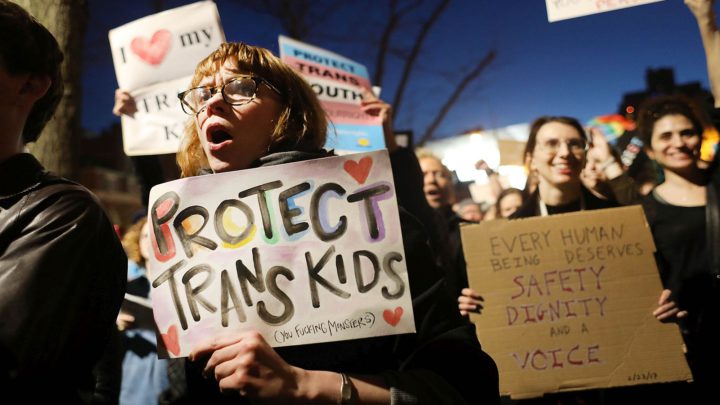Reformation: so much more than Henry vs Pope
A BBC documentary illuminates how the Reformation turned the world upside down and ushered in the modern era.

In the latest episode of the BBC TV documentary series The Great British Story: A People’s History, the ability of new ideas and ways of thinking to reshape society was shown through the tale of the Reformation. The fifth installment of the series, ‘Lost Worlds and New Worlds’, charted the collapse of the old order and faith, as new radical religious ideas and structures of society entered the stage of history. The basic question behind the Reformation was: ‘By whose authority is my path to God?’
Before the start of the Reformation in the 1400s, the British Isles were religiously monolithic. Despite there being many nations, centres of parliament and power, and 10 different languages, all inhabitants conformed to the same basic view of the world, as dictated by the authority of the papacy. And yet by the end of the Reformation, England saw its official religion change numerous times, with many more potential contenders emerging.
The BBC’s documentary started with a visit to a church in the small Welsh village of Llancarfan. Only recently have the under-layers of the white church walls been revealed, showing the old pre-Reformation Catholic paintings that once decorated them. Painted images of the Virgin Mary, purgatory, the devil and depictions of the seven deadly sins had all been covered up as the Reformation washed away the traditional authority of the old established religion.
It would be a mistake to see the Reformation beginning with the doctrinal schism between Henry VIII and the Papal Authority in the 1530s. Rather, the start should be seen in the preaching of the Lollards. In the 1400s, these radical heretics questioned the idea that the Bible should only be read in Latin. The Lollards also called for other unthinkable changes, such as bringing about ‘communal property’ – an idea they found in the Bible – as well as the ability of women to spread the gospel. Far from being a minor group, according to the BBC documentary they enjoyed much support in and around London. The ideas started by this group would remain throughout the Reformation.
Not only were the ideas of the old world shaken; so too was the material basis of it. Following the Church of England’s split with Rome, and facing a financial crisis, Henry VIII ordered the dissolution of the monasteries and seizure of their land. With monasteries being the largest landowners in the country, this was one of the biggest transfers of property in history. No longer was wealth to be held by the unproductive archaic institution of the monastery; rather it was being transferred to a new rising merchant class – the prototype of the modern-day bourgeoisie. On these new lands, under the control of a new class, trade boomed, tin and coal mines were dug, and industry started to flourish. Once the old faith and its power had been destroyed, so the old order and structures of feudal society were challenged too.
The Reformation gathered pace under Edward VI, influenced by radical Protestant ministers. In 1549, they attempted a complete overturning of the old religious order. The BBC documentary explained how their campaign to destroy religious images, whitewash decorated church walls, dig out altars and distribute English prayer books completely overturned religious life. While these revolutionary changes were welcomed and supported in London and surrounding regions, they provoked bitter resistance in many other areas, particularly the north and south-west of England. This resistance eventually culminated in the unsuccessful Prayer Book Rebellion of 1549 in Cornwall.
With the defeat of the Spanish Armada by Elizabeth I, the Reformation seemed firmly secure, and Protestantism the entrenched religion of the land. But many remained true to the old faith, and conflict would continue for years to come.
After the challenge and defeat of a 1,000-year old belief system, which was once completely cemented in power, the strength of the Reformation and its questioning of authority grew. While for Elizabeth I the Reformation was over, for many it had not gone far enough. The establishment of an official Protestant Church of England still raised the central question, ‘By whose authority is my path to God?’. Radical religious ideas, further questioning central tenets of religious authority, continued to flourish, particularly in the East Midlands and the village of Scrooby. By questioning the need for bishops, radical Puritan Separatists also questioned the position of the monarch. The undermining and questioning of the established religious authority had opened the way for further questioning of the remaining entrenched authority and privilege that survived the Reformation, soon leading to the ideas of the revolutionary age.
Besides being a fascinating story, this documentary revealed how the unraveling of the central ideas of an age, no matter how entrenched, can lead to a complete change in the order of society and can turn the world upside down.
Tom Bailey is a history undergraduate at University College London. He is currently interning at spiked.
To enquire about republishing spiked’s content, a right to reply or to request a correction, please contact the managing editor, Viv Regan.








Comments
Want to join the conversation?
Only spiked supporters and patrons, who donate regularly to us, can comment on our articles.